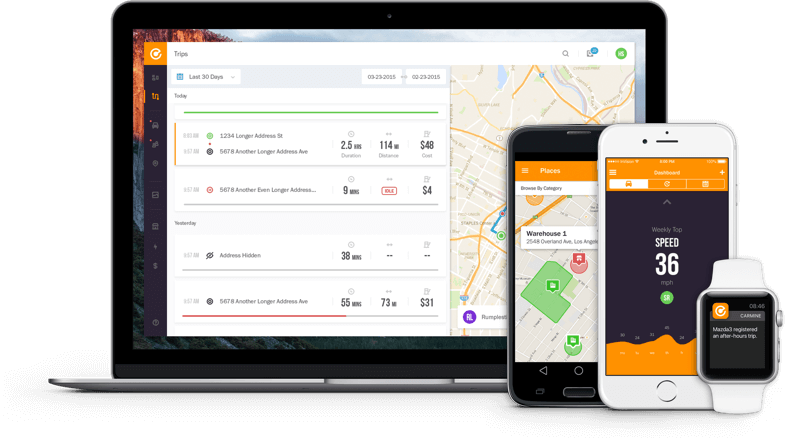How Does GPS Tracking Work?
Satellite Connects To GPS Receiver
GPS Receiver Info Sent To Data Center
GPS Data Sent To Carmine App
THE BASICS OF GPS
There are two important components of a Global Positioning System (GPS), satellites and the devices that communicate with them by listening and receiving data. A GPS receiver, whether it’s a vehicle tracker or your mobile phone, connects to 3 or more satellites that send recurring location signals.
Because GPS satellites have a fixed flight path, they’re in the same places at the same times over and over. The GPS receiver can then use the satellite’s time and distance data to accurately calculate your current location (latitude and longitude).
Turning GPS Data Into Business Intelligence

The Tracker
In a vehicle, a GPS tracker generates location data from satellite data. It will also connect to the vehicle’s computer to record speed, hard braking, hard acceleration, check engine codes and fuel level. All very relevant information for a fleet business.
The device then transmits this info via cellular network to a data center server for processing. In order for this whole process to work efficiently, the tracker must have clear line of sight to clearly see GPS satellites for best performance.
The Server
All the raw information from the tracker is sent to a data center. This is when the server – the engine of a fleet tracking system – steps in to receive, store, process and retrieve the information. Driver behavior is evaluated, trip replays are stored and fuel analytics are performed. A cutting-edge server is the core of a powerful fleet tracking solution.


The User Interface
A thoughtfully designed user interface is where all this data is served up to you via maps showing vehicle locations, real-time alerts, customizable reports and an intuitive dashboard. A reputable SaaS provider, such as Carmine, turns data processed by the server into real-time, actionable business intelligence that can be used to manage and monitor your fleet, as well as realize greater efficiency and profitability.
Of course, the application should also be accessible using any desktop, laptop, tablet or smart phone with an internet connection. It should be a system that goes wherever you and your fleet go.
 Skip to content
Skip to content